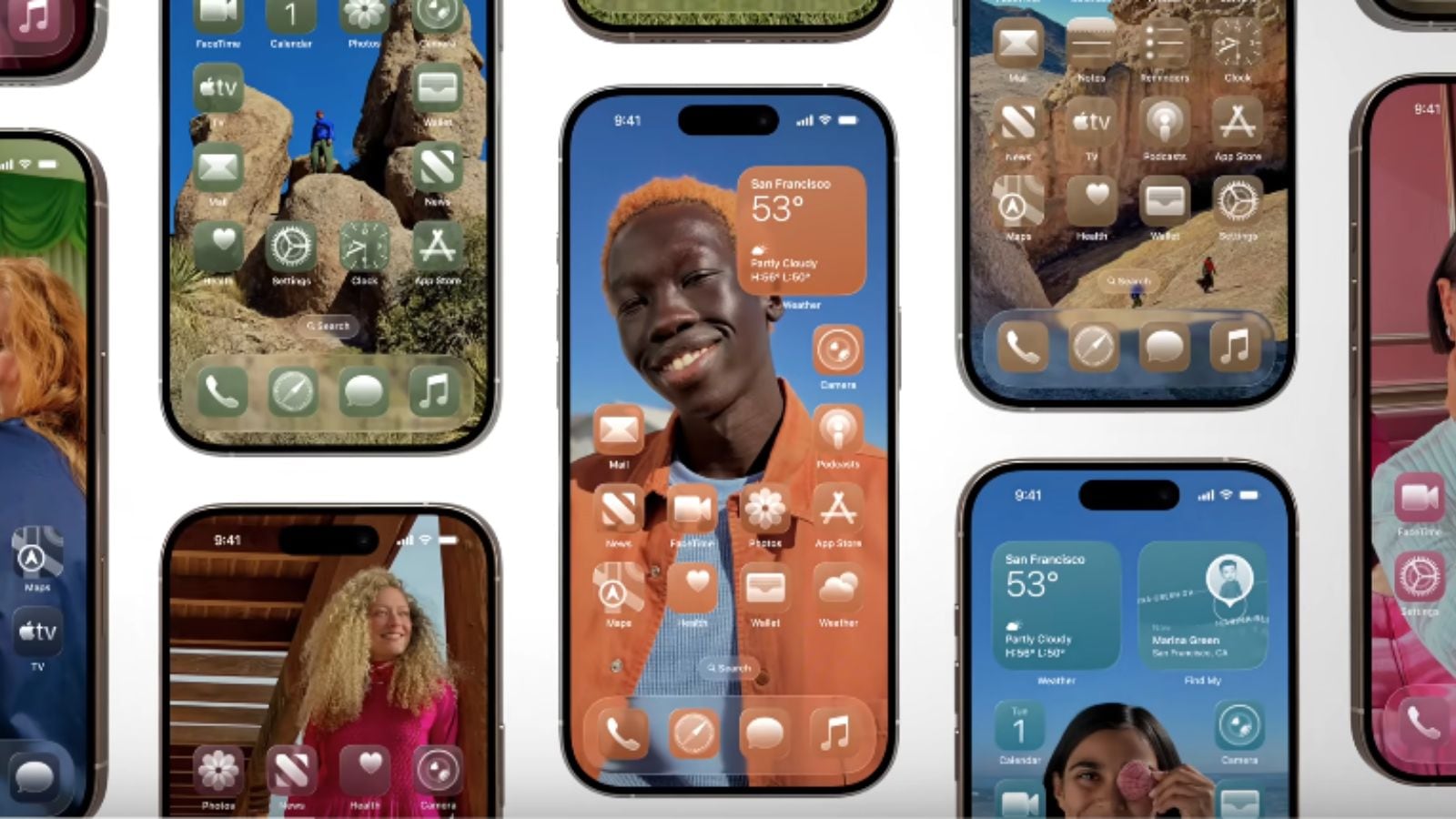Apple’s annual Worldwide Developer Conference (WWDC) 2025 keynote on Monday, June 9, was all about its new ‘Liquid Glass’ design language coming to its operating systems. During the event, the company also showed off a mix of new software updates and features for the iPhone, iPad, Mac, Vision Pro, Apple Watch, AirPods, and more.
From the UI design revamp to windowing features for iPad, live translation in iMessage, smarter Spotlight in macOS Tahoe, and a Visual Intelligence-powered iOS upgrade, here’s a rundown of the most significant changes announced by Apple during the WWDC 2025 keynote.
Liquid Glass design
Apple is changing the operating system design across all its products with a new design theme called ‘Liquid Glass’ that extends across iOS, iPadOS, macOS, watchOS, and tvOS.
As part of the new look, buttons, switches, sliders, text, and media controls are more translucent throughout the interfaces. This look is also adopted by the date, time, and notification previews on iOS 26’s lockscreen. It means that users have a blurred view of the wallpaper behind all the text or apps on the home screen even when they pull down the Control Centre from the top right corner.
Apple’s liquid glass design is drawing mixed reactions online. While some are in awe of how it fluidly blends, for instance, the time into the lockscreen wallpaper, others have pointed out that it is harder to read text due to the glass-like optical qualities of the new design.
In iOS 26, the home bar that was earlier used to swipe up to get to the home screen disappears after you open an app. Apple has also introduced a new app icon mode, besides Light and Dark mode, called All Clear which makes the app icons highly translucent and monochrome.
New naming convention for operating systems
As expected, Apple has decided to switch to a new naming convention with the latest versions of its operating systems. It is based on the year following its release. Instead of iOS 19, watchOS 12, and macOS 16, the new names are iOS 26, iPadOS 26, macOS 26, watchOS 26, tvOS 26, and visionOS 26. While all of these operating systems are currently available in developer beta, they are expected to be rolled out to all eligible devices in late 2025.
Story continues below this ad
New windowing, multitasking capabilities in iPadOS 26
In its preview of iPadOS 26, Apple showed off new windowing capabilities that are designed to make multitasking easier. This includes the ability to resize app windows, place them around your display, and open more windows at once. It also adds a new Mac-like menu bar that allows users to swipe down on an app to view various options and commands. Windows tiling also allows users to arrange their windows with a simple flick.
The iPadOS 26 is also getting a more precise mouse pointer and its own version of the Preview app that lets users view, edit, and mark up files with Apple Pencil or by touch. With iPadOS 26, users will have the ability to choose different audio inputs such as iPad mic or Bluetooth mic for each app.
A smarter Spotlight in macOS Tahoe
The latest updated version of macOS brings major upgrades to Spotlight, the search functionality on Mac. Search results shown on Spotlight are now more personalised and listed together. It also offers filtering options to help users search for specific files and apps or view clipboard history. Users can now take actions like sending an email, creating a note, or playing a podcast directly on Spotlight without visiting the apps. Short keys such as ‘sm’ or ‘ad’ can also be used to quickly initiate these actions.
Screen-aware AI
Visual Intelligence, Apple’s AI-powered image analysis feature, is coming to the iPhone screen as part of iOS 26. Built on top of Apple Intelligence, the new feature allows users to do an image search of an object or ask ChatGPT questions about what they are looking at on their screens. Visual Intelligence is also capable of recognising an event and asking the user if they would like to add it to their calendar, while filling out the details like time and location on its own based on the on-screen text.
Story continues below this ad
“We’re also making it possible for you to search visually across your most-used apps using Visual Intelligence with the iPhone camera,” Apple’s head of software engineering, Craig Federighi, said while onstage at WWDC.
Apple also introduced the Foundational Model Framework, which gives developers access to its own foundational AI models that can be used to power new AI apps and AI features within apps.




Average Rating